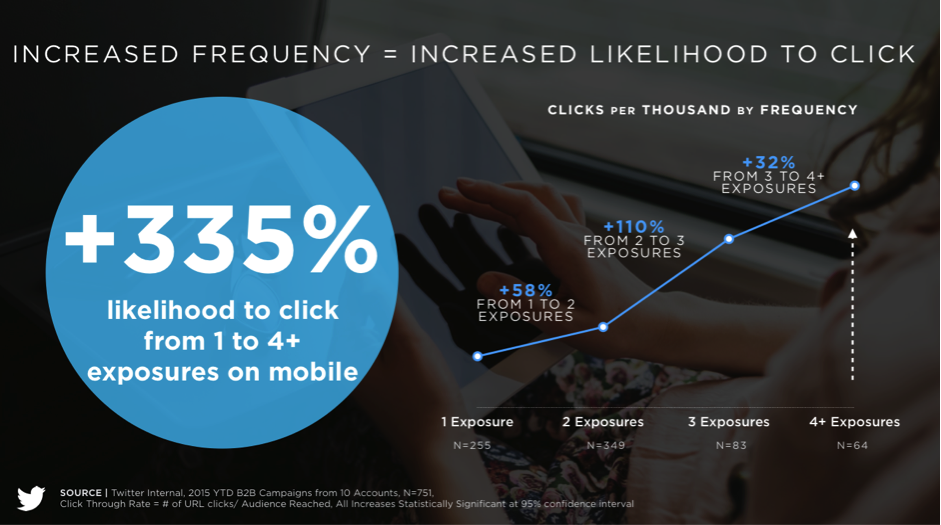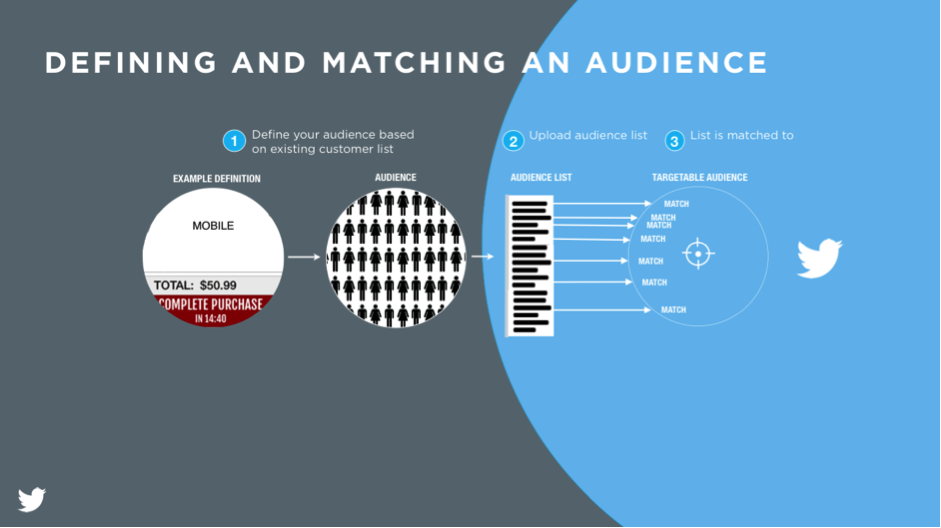
Get your FREE 30-day trial.
Please complete all fields.
Since its conception as a mobile-first platform, Twitter has both recognized and focused its strategy toward this trend with 83% of their active audience being on a mobile device. At Salesforce Connections, Andrew Sweet, Lead Account Executive at Twitter discussed with Salesforce what is needed to ensure the advertiser can stay ahead with mobile and Twitter advertising, including:
He started by discussing the "double-edged sword" a mobile-first world presents for the advertiser; while moving in time with the customer, a mobile space can "create challenges for creatives" where there is a need to "make sure that that much smaller space is effectively utilized." Therefore, Andrew highlights, "Everything that you run on Twitter needs to be done with the mentality of how someone will view this on their phone, as this is most likely the way that your customers will be interacting with it".
In addition to Twitter being mobile first, Twitter has helped contribute to the 35% year-over-year growth in digital advertising spend on video. Videos help to create brand engagement by tapping into customer journeys. Andrew mentions how it can be "initially hard to get customers to purchase/register through video, however there are ways that Twitter can tie the initial action with the customer." The ability to know who is engaging with your videos, and then feed this data into targetable audiences is one of the most powerful ways of building and leveraging a customer focused advertising strategy.
While most advertisers are aware of the different Twitter units available for advertising, utilizing these different creative types within the same campaign aids conversion activity. Each creative impression counts as an exposure; Andrew reasons that to "expect a user to visit an external landing page and purchase/register on one exposure is a stretch." Depending on the customer's place in the conversion funnel, each creative can be further honed and targeted, helping to foster a multi-step re-engagement journey.
Based on Twitter's research, Andrew recommends "2.5 exposures per user, on a quarterly basis" as a good standard for advertisers to follow. Where the general rule lies with increased frequency resulting in increased likelihood to click, advertisers should bear in mind the need to "focus on a more targeted audience you can engage on different levels, rather than a much more broad audience with one creative".

Crucially, 310 million of Twitter's 1 billion+ total monthly audience are logged in registered users who can be targeted with sponsored posts. Customer data, such as email addresses or Twitter IDs can be uploaded to either Twitter or Salesforce's Advertising Studio; the customer data is then matched to registered Twitter users to create dynamic targetable audiences. One of the key benefits of completing this within Advertising Studio is that all of your data is securely held within Salesforce, and this data can be quickly and efficiently segmented, with clear visualizations of match and refresh rates.

The ability to target customers based on personally identifiable data has its obvious benefits, however Andrew highlights one of Tailored Audiences' large use cases being in exclusion targeting. Advertisers can exclude already known loyal and valuable customers, ensuring they are driving a more cost-effective campaign in targeting new, ready-to-engage customers. Twitter has a suite of well established targeting options; Tailored Audiences can also be layered with "standard" demographic targeting, such as age, gender, helping to drill down even further on the advertiser's re-engagement options. Additionally, coupling this with keyword and handle targeting can help to provide another layer to refine your audience even further.
There are three key things to keep in mind when looking to focus your Twitter advertising strategy:
For more information about how to compare your Twitter performance to your peers, check out our new Q1 2016 Advertising Index report.